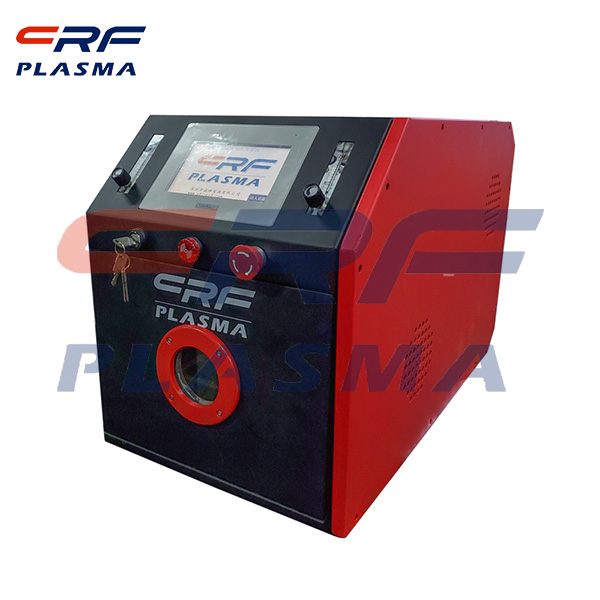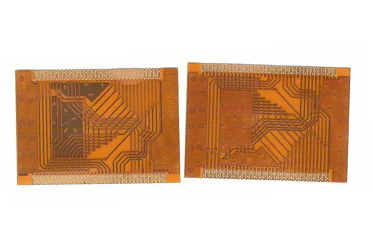
Welcome to Shenzhen Sing Fung Intelligent Manufacturing Co., Ltd.
E-mail:shaobo@sfi-crf.com
Influence of atmospheric pressure low temperature plasma energy density
- Categories:Technical Support
- Author:plasma cleaning machine-surface treatment equipment-CRF plasma machine-Sing Fung Intelligent Manufacturing
- Origin:
- Time of issue:2020-11-13
- Views:
(Summary description)In a normal pressure flow plasma reactor, the main factors affecting the plasma energy density are the feed gas flow rate F and the plasma injection power P. The feedstock gas flow rate is one of the main factors affecting the density and collision probability of the active particles in the reaction system. The plasma injection power is the energy source for the generation of various active particles in the plasma (high-energy electrons, reactive oxygen species, methyl radicals, etc.). The dynamic synergistic effect of the two can be described by energy density Ed(kJ/mol). Influence of atmospheric pressure low temperature plasma energy density on methane conversion: With the decrease of plasma energy density, the conversion rate of methane decreases, but the C2 hydrocarbon selectivity increases with the decrease of energy density, and the C2 hydrocarbon yield does not fluctuate much. In a flow plasma reactor, the injected plasma energy and the total gas flow rate are two important factors affecting plasma chemical reactions. This is because the former is the energy source of various active particles in the plasma, while the latter is the determinant of the density and collision probability of the active particles in the reaction system. When the injected energy is constant, the gas flow rate increases, that is, the energy absorbed by the gas per unit flow rate decreases. Therefore, low flow rate is conducive to improving the yield. However, when the flow rate is too low, the target product is prone to further cracking to form C, resulting in the decrease of the yield of C2 hydrocarbon. Therefore, appropriate plasma energy density must be adopted to obtain the high yield of Hydrocarbon C2. There is a serious problem of carbon deposition in the conversion of pure methane by plasma. In the low temperature plasma activation reaction at atmospheric pressure, a layer of carbon deposition will be formed on the reactor wall. The longer reaction time or the greater the input energy, the more carbon deposition will be. The increase of carbon deposition will directly affect the conversion rate of CH4, which will make the reaction unable to continue in severe cases.
Influence of atmospheric pressure low temperature plasma energy density
(Summary description)In a normal pressure flow plasma reactor, the main factors affecting the plasma energy density are the feed gas flow rate F and the plasma injection power P. The feedstock gas flow rate is one of the main factors affecting the density and collision probability of the active particles in the reaction system. The plasma injection power is the energy source for the generation of various active particles in the plasma (high-energy electrons, reactive oxygen species, methyl radicals, etc.). The dynamic synergistic effect of the two can be described by energy density Ed(kJ/mol). Influence of atmospheric pressure low temperature plasma energy density on methane conversion: With the decrease of plasma energy density, the conversion rate of methane decreases, but the C2 hydrocarbon selectivity increases with the decrease of energy density, and the C2 hydrocarbon yield does not fluctuate much.
In a flow plasma reactor, the injected plasma energy and the total gas flow rate are two important factors affecting plasma chemical reactions. This is because the former is the energy source of various active particles in the plasma, while the latter is the determinant of the density and collision probability of the active particles in the reaction system. When the injected energy is constant, the gas flow rate increases, that is, the energy absorbed by the gas per unit flow rate decreases. Therefore, low flow rate is conducive to improving the yield. However, when the flow rate is too low, the target product is prone to further cracking to form C, resulting in the decrease of the yield of C2 hydrocarbon. Therefore, appropriate plasma energy density must be adopted to obtain the high yield of Hydrocarbon C2.
There is a serious problem of carbon deposition in the conversion of pure methane by plasma. In the low temperature plasma activation reaction at atmospheric pressure, a layer of carbon deposition will be formed on the reactor wall. The longer reaction time or the greater the input energy, the more carbon deposition will be. The increase of carbon deposition will directly affect the conversion rate of CH4, which will make the reaction unable to continue in severe cases.
- Categories:Technical Support
- Author:plasma cleaning machine-surface treatment equipment-CRF plasma machine-Sing Fung Intelligent Manufacturing
- Origin:
- Time of issue:2020-11-13 09:31
- Views:
Influence of atmospheric pressure low temperature plasma energy density:
In a normal pressure flow plasma reactor, the main factors affecting the plasma energy density are the feed gas flow rate F and the plasma injection power P. The feedstock gas flow rate is one of the main factors affecting the density and collision probability of the active particles in the reaction system. The plasma injection power is the energy source for the generation of various active particles in the plasma (high-energy electrons, reactive oxygen species, methyl radicals, etc.). The dynamic synergistic effect of the two can be described by energy density Ed(kJ/mol). Influence of atmospheric pressure low temperature plasma energy density on methane conversion: With the decrease of plasma energy density, the conversion rate of methane decreases, but the C2 hydrocarbon selectivity increases with the decrease of energy density, and the C2 hydrocarbon yield does not fluctuate much.
In a flow plasma reactor, the injected plasma energy and the total gas flow rate are two important factors affecting plasma chemical reactions. This is because the former is the energy source of various active particles in the plasma, while the latter is the determinant of the density and collision probability of the active particles in the reaction system. When the injected energy is constant, the gas flow rate increases, that is, the energy absorbed by the gas per unit flow rate decreases. Therefore, low flow rate is conducive to improving the yield. However, when the flow rate is too low, the target product is prone to further cracking to form C, resulting in the decrease of the yield of C2 hydrocarbon. Therefore, appropriate plasma energy density must be adopted to obtain the high yield of Hydrocarbon C2.
There is a serious problem of carbon deposition in the conversion of pure methane by plasma. In the low temperature plasma activation reaction at atmospheric pressure, a layer of carbon deposition will be formed on the reactor wall. The longer reaction time or the greater the input energy, the more carbon deposition will be. The increase of carbon deposition will directly affect the conversion rate of CH4, which will make the reaction unable to continue in severe cases.

Scan the QR code to read on your phone

TEL:0755-3367 3020 / 0755-3367 3019

E-mail:sales-sfi@sfi-crf.com

ADD:Mabao Industrial Zone, Huangpu, Baoan District, Shenzhen


















